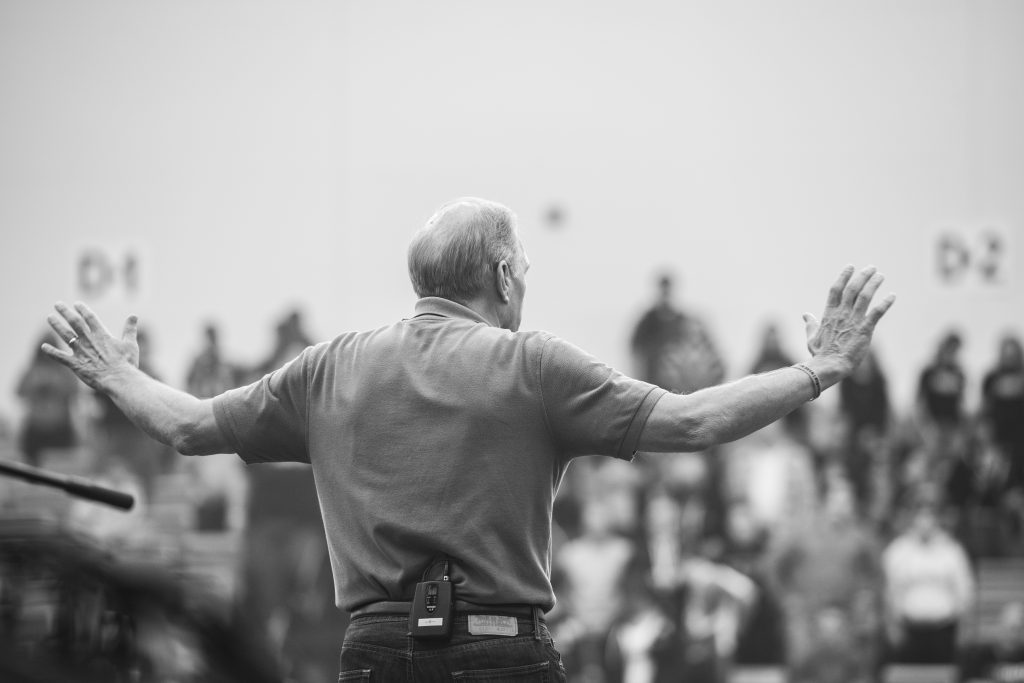I see a 20 to 50-year view of GNJ, and I am encouraged.
One of my favorite encounters as a bishop was with a 70 year old farmer in South Jersey. He spoke with me about farming and the changes he had to make because the market/culture had changed. When West Virginia wasn’t buying as many peaches, he started a pick your own peaches program. When the local supermarkets weren’t buying as many strawberries, he invited people to pick their own strawberries. He started hosting hay rides and games for children. He said, “I had to change in order to sustain the farm and make money.”
This is the final article in a five-part series on building and growing a regenerative church and conference that is constantly generating:
- Passionate Faith
- Transformative Leaders
- Vital Mission Congregations
- Money, and lots of it for mission
The one who received $500 made $1,000. -Matthew 25:14 ff (paraphrase)
The farmer lived this parable. Today I want to talk with you about money, and the importance of raising a lot of money for the mission.
The farm and the church are experiencing very similar environments in GNJ. For farmers, the growing process, the production and marketing costs and and people’s purchasing preferences have changed. There are more corporate farms, more organic farms and more farmer’s markets. Farmers are reinventing themselves.
Like the farm, people’s spiritual and faith habits have changed. Farms that are not changing are going out of business. Churches that are not changing are going “out of business.”
While the church has been consolidating, the mission has not. In fact, the mission is as great as ever before and is expanding. Key to the mission, just like farming, is money. Money is one of the things needed to sustain the mission. In GNJ we have taken several steps to strengthen our finances and the mission. For instance, A Future With Hope (AFWH), the nonprofit corporation that has rebuilt or built new more than 250 homes after Superstorm Sandy and raised $17 million. Today, AFWH and GNJ are working together to create 100 Hope Centers, train congregations and communities to be Communities of Hope, and developing housing and church property. Through AFWH we are extending the mission through more than $17 million that has been raised. This is a first in GNJ’s history.
We also reorganized the United Methodist Stewardship Foundation of GNJ and refocused our efforts which moved us from $4 million under investment to $36 million. This change has enabled us to create a development team for local church fundraising, individual donor gifts and grants through church, corporations, foundations and government sources. The money raised by these new staff members will be used to continue to sustain and expand GNJ’s mission through our congregations.
As we are becoming stronger and identifying other funding sources, it is allowing us to do more mission, work with our congregations to increase their financial sustainability and even reduce our apportioned Shared Ministry to our congregations. The 2018 proposed apportioned Shared Ministry will reduce the overall amount apportioned to our churches by 8%. Over the last three we reduced the apportioned Shared Ministries by 7% for a total of 15% reduction. All of this reduction is being done without shrinking the mission but expanding it and increasing resourcing to our congregations. How? We have taken the farmers advice and are reinventing ourselves.
We are beginning to see signs of this same spirit in congregations. Congregations looking at what they do and how they use their money and property to generate more money for the mission. These churches are like the parable Jesus tells in Matthew 25:14 ff where they grow what God has blessed them with. These churches tend to look at things like Shared Ministry savings and ask, “How can we spend this money to generate new disciples, increased mission, more lives transformed and more money for mission?” rather than put the money back into the status quo.
The future will not be built on doing more of the same or playing it safe but by risking — we have a future with hope. Humbling ourselves before God and becoming the new church innovators of what is next for the church will expand the mission and give us a 20-50 year view of a vibrant and vital church. GNJ has a great future ahead, because leadership are committed to growing passionate faith, calling and equipping transformational leaders, developing vital mission congregations, and raising money, and lots of it for mission.
Let us work together to create a church that is transformational now and in 20 years.
Keep the faith!
John
John Schol, Bishop
The United Methodist Church
of Greater New Jersey

